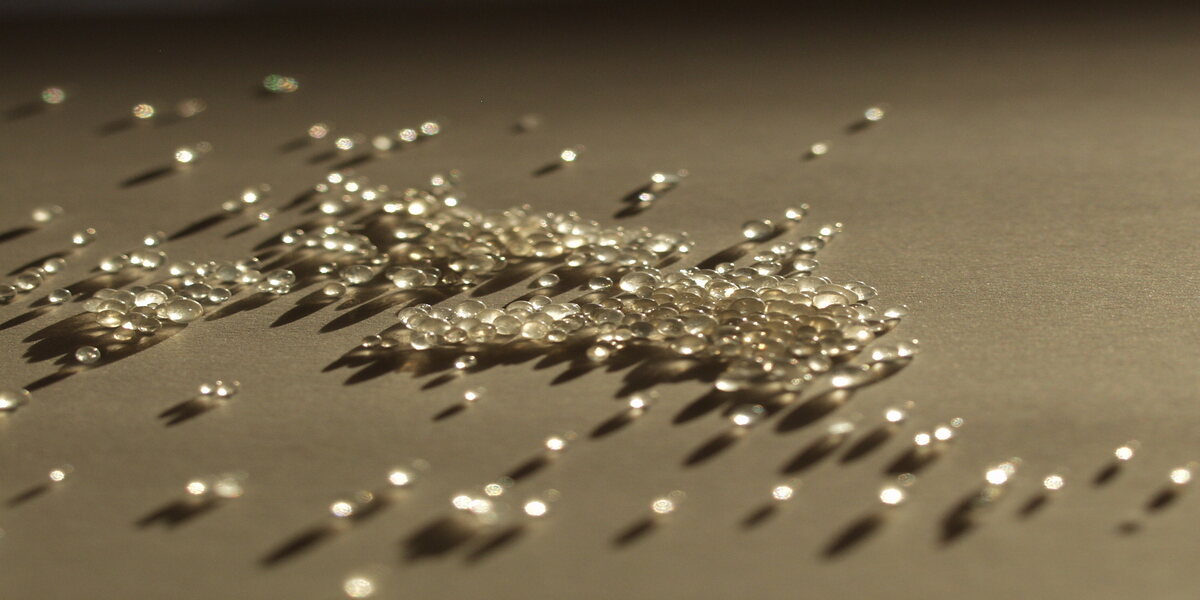Silica is also known as silicon dioxide, a chemical component found in sand, gravel, clay, granite, and other rock types. It is a dense and intricate substance comprised of silicon and oxygen, the two most prevalent elements in the earth’s crust. It is the principal component of most types of sand and a critical part of glass-making. Making glass items out of silica is a centuries-old craft with a wide range of modern industrial applications. These include abrasives, construction supplies, fillers, electronics, and water filtration.
Properties
- The chemical and physical features include hardness, colour, melting and boiling points, and reactivity.
- It is a solid, crystallised mineral at standard temperature and pressure conditions. It is relatively hard, scoring a 7 on the Mohs scale, which compares the hardness of minerals. Diamond, the hardest mineral, is a 10 on the scale.
- Pure silica is colourless. However, quartz may appear coloured if impurities are present. Rose quartz, for example, is silica with traces of iron. Because of this, it appears pink. Silica containing liquid or air bubble inclusions, known as milky quartz, gives the crystal a white appearance.
- It has extremely high melting and boiling points: 3,110 °F and 4,046 °F, respectively. E.g. Silica sand is melted in a large, hot furnace to manufacture glass.
- It reacts with hydrofluoric acid, used in the semiconductor industry to carve quartz.
- It also reacts with metal oxides such as sodium oxide and lead oxide. These reactions create several glass forms, such as borosilicate and leaded glass. Borosilicate glass is a form that withstands temperature fluctuations, used in laboratory glassware.
Types
Crystalline Silica
The chemical term of this type is silicon dioxide (SiO2). Numerous rocks (sandstone, granite, sand) contain various proportions of crystalline silica, mostly quartz. Sand is a source of crystalline silica since it is almost entirely comprised of quartz. The existence of crystals can be seen on a small scale because It has a 3-dimensional structure that creates crystalline domains.
Found in – It is a natural material found in stone, soil, and sand and is also present in concrete, brick, mortar, and other construction materials.
Subtypes – There are three primary forms of crystalline silica in the earth’s crust: quartz, cristobalite, and tridymite.
Benefits & Uses
It has many industrial uses, including as an excipient in pharmaceuticals and vitamins, as a food additive (i.e., an anti-caking agent), as a way to clarify liquids, control viscosity, as an anti-foaming agent, and as a dough modifier. Also, have a use case to construct glass, pottery, ceramics, bricks, and artificial stone.
Risks
Inhalation is the principal route of exposure to crystalline silica. Because, at first it must be ground or crushed before utilising as an absorbent, granulation, or filler in building materials. At this point, it would be processed to create tiny particles. Once inhaled, these small particles can cause various illnesses or bodily dysfunctions, the most serious of which are silicosis and lung cancer.
Exposure to silica particles when cutting, grinding, drilling, sanding, combining or demolishing silica-containing materials of construction workers results in long-term harm. The amount of risk determined by the size of the airborne silica particles. Smaller particles breathed deeply into the lungs could cause long-term damage. Larger particles, such as beach sand, are less of an issue because they are too big to inhale.
Non-crystalline silica
Amorphous silica is another name for non-crystalline silica. The term “amorphous” refers to the lack of a defined shape or form and the fact that it is not a salt crystal. Amorphous silica gel is a white powder with a fine sand-like texture, and it has a silvery sheen to it.
Found in – Commonly found in glass, silicon carbide, and silicone.
Subtypes – It can be natural or manufactured, anhydrous or surface-hydrated containing silanol groups. Micro amorphous silica and vitreous silica (glass) are synthetic amorphous silica.
Benefits & Uses
There are numerous beneficial qualities for manufacturing a wide range of valuable products. One of the properties includes the ability to absorb and filter water. Because of its propensity to absorb moisture from the air, silica gel has been employed as a desiccant in those small bags that are usually found in products to guard against excess moisture. A different form of amorphous silica acts as an agent in toothpaste, cosmetics, food packaging, and food additives.
Risks
Exposure to amorphous silica in quantities prevalent in the environment or industrial items like cosmetics has no known negative impact on health. It may cause respiratory illnesses in employees (although not silicosis, according to a few reports). Studies on lab animals show that inhaling amorphous silica is less dangerous than crystalline silica, despite the possibility of lung irritation and damage.

